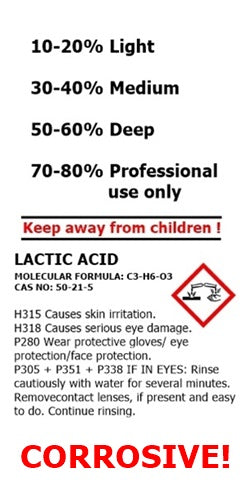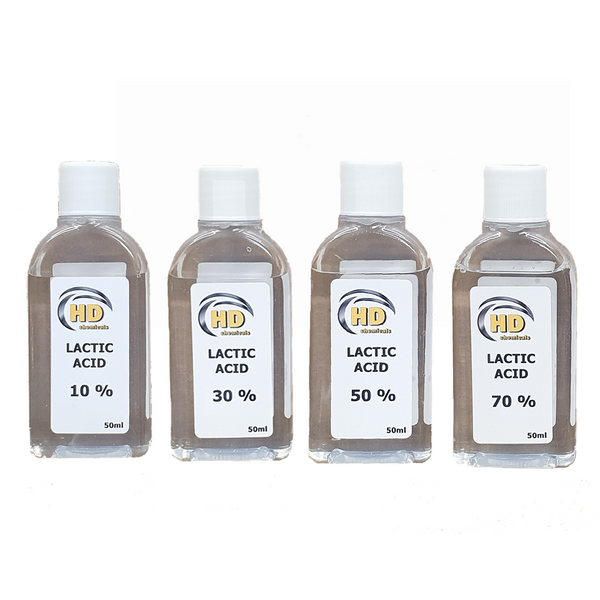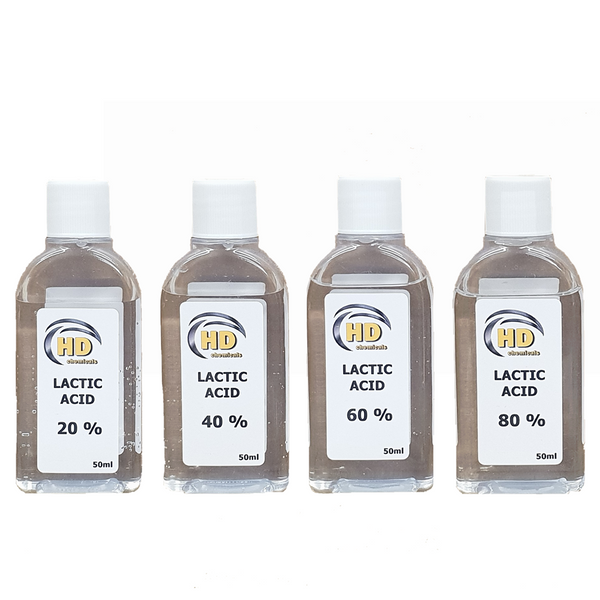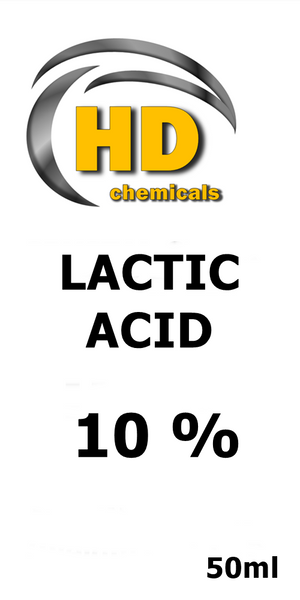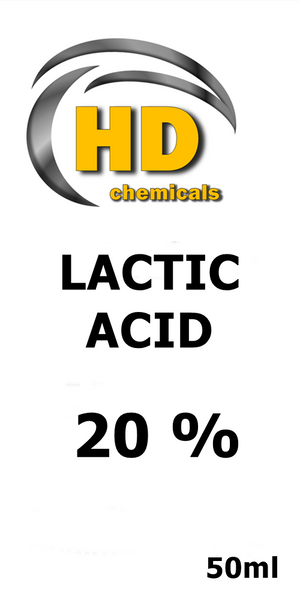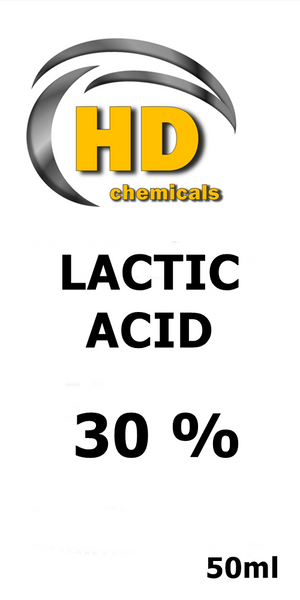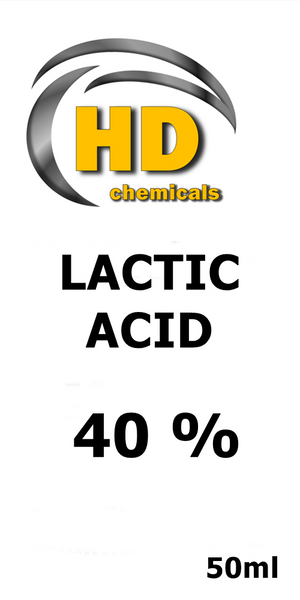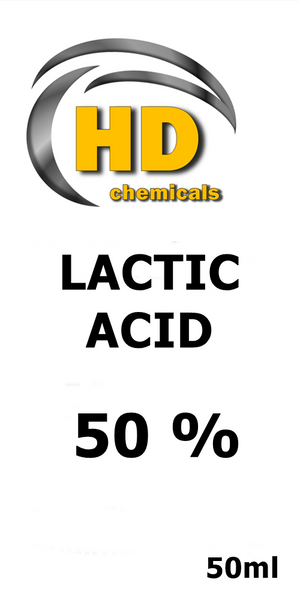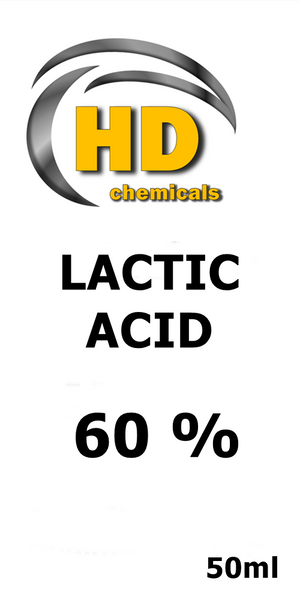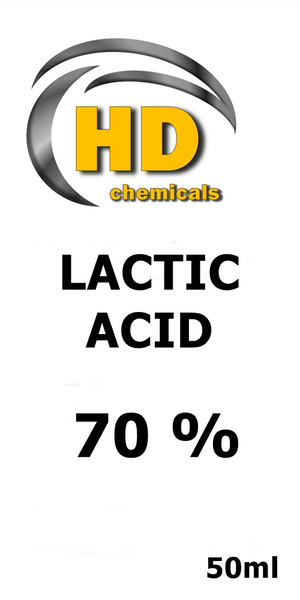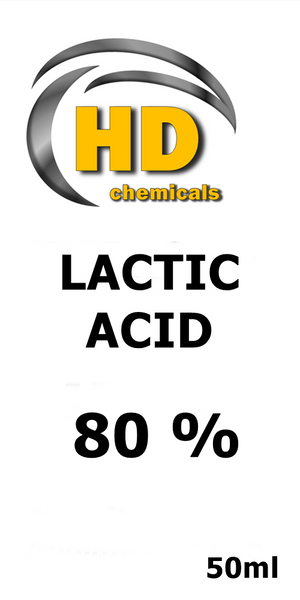Lactic Acid Peel 10% - 80% 50ml
Lactic Acid Peel 10% - 80% (100ml) | Professional Strength AHA Face Peel for Exfoliation & Skin Renewal
📘 Product Overview:
Reveal a radiant, youthful glow with our Lactic Acid Peel (10%–80%) – 100ml Professional Size. This advanced AHA peel gently exfoliates dead skin cells, brightens dull complexions, and smooths uneven texture. Ideal for at-home skincare enthusiasts or professional salon treatments, it helps achieve visibly refreshed and rejuvenated skin.
✨ Key Features:
-
Professional Strength Range – Choose from 10%, 30%, 50%, or 80% lactic acid.
-
Brightening Action – Improves dull, uneven skin tone and reduces pigmentation.
-
Anti-Aging Power – Smooths fine lines and promotes collagen renewal.
-
Hydration Support – Lactic acid retains skin’s natural moisture barrier.
-
Economical 100ml Size – Perfect for repeated at-home or salon use.
💆 Uses:
-
Facial Exfoliation Peel – Removes dead skin cells and refreshes skin surface.
-
Pigmentation & Dark Spot Reduction – Fades discoloration for even skin tone.
-
Anti-Aging Skin Renewal – Reduces wrinkles and promotes elasticity.
-
Acne Scar Treatment – Smooths texture and minimizes post-acne marks.
-
Professional Spa Use – Suitable for trained estheticians and skincare clinics.
📋 Product Details:
-
Weight: 100ml
-
Grade: Cosmetic / Professional Grade
-
Form: Liquid Chemical Peel Solution
📈 Other Names:
Lactic Acid AHA Peel, Professional Chemical Face Peel, Lactic Acid Exfoliating Solution, AHA Skin Brightening Peel, Deep Exfoliating Facial Peel
SEO Keywords: lactic acid peel 100ml, professional AHA peel, 80% lactic acid, lactic acid face peel, exfoliating acid peel, anti-aging facial peel, skin renewal treatment, salon grade chemical peel, lactic acid skincare
🪞 Step-by-Step How to Use:
-
Cleanse: Wash the skin thoroughly and pat dry.
-
Patch Test: Apply 1ml to a small area (inner arm or jawline) and wait 24 hours.
-
Apply Peel: Using a cotton pad or brush, apply 1–2ml evenly to the face (avoid eyes and lips).
-
Wait: Leave on for 1–2 minutes for beginners (10–20%), or up to 5 minutes for higher concentrations (50–80%).
-
Rinse & Neutralize: Rinse off completely with cool water and follow with a pH-neutralizer or calming moisturizer.
💡 Avoid sun exposure for 24–48 hours and use SPF 30+ daily after treatment.
❓ FAQs:
1. What percentage should I start with?
For new users, begin with 10% or 20%, and gradually work up to higher strengths as your skin adjusts.
2. How often can I use this peel?
Apply once every 7–10 days depending on your skin type and peel strength.
3. Can I use this peel with other skincare acids?
No. Avoid using it alongside other exfoliating acids, retinoids, or vitamin C for at least 48 hours.
4. Is this suitable for dry or sensitive skin?
Yes, lactic acid is one of the gentlest AHAs and helps improve hydration while exfoliating.
5. How do I store it properly?
Keep tightly closed in a cool, dark place, away from heat and direct sunlight to preserve potency.
20% beginners
40% regular users
60% experienced users
80% Body Peels Only
LACTIC ACID MUST NOT BE USED BY :
- THOSE PREGNANT OR LACTATING
- THOSE UNDER 16 YEARS OF AGE
- THOSE WITH DIABETE MELLITUS (SUGAR DIABETES)OR CIRCULATORY PROBLEMS INCLUDING RAYNAUD'S DISEASE
- THOSE ALLERGIC TO ASPIRIN OR LACTIC ACID
- DARKER SKIN TENDS TO BE MORE SENSITIVE AND THUS PRONE TO SCARRING. IT IS RECOMMENDED TO START ON THE LOWEST CONCENTRATION OF 10% AND TO MOVE PROGRESSIVELY UP THE STRENGTH IF YOU SKIN DOES NOT ACT ADVERSELY. A PATCH TEST IS ALWAYS ADVISED BEFORE EVERY TREATMENT.
- LACTIC ACID AS BHA INCREASES SKIN PHOTOSENSITIVITY, MAKING THE SKIN MORE PRONE TO SUNBURN. AFTER USING THIS PRODUCT LIMIT SUN EXPOSURE AND WEAR FULL SUN SCREEN AND PROTECTIVE CLOTHING.
- ALWAYS CONDUCT A PATCH TEST ON THE AREA TO BE TREATED, BEFORE APPLYING A FULL TREATMENT.
- STRICTLY FOR EXTERNAL USE AND MUST NOT BE INGESTED. DO NOT APPLY TO FINE AREAS OF SKIN INCLUDING LIPS AND UNDER EYE REGION.
You shouldn’t use a lactic acid peel if you have:
-
eczema
-
psoriasis
-
rosacea
If you have naturally darker skin, talk to your doctor or dermatologist before use. Chemical peels may increase your risk of hyperpigmentation.
PLEASE PERFORM A PATCH TEST AT LEAST 24 HOURS BEFORE TREATMENT. IF ALLERGIC REACTION OCCURS, OR OTHERWISE NEGATIVE SIDE-EFFECTS, PLEASE DO NOT CONTINUE WITH THE TREATMENT.
* IF NO ALLERGIES, APPLY TO A CLEAN FACE
* LEAVE FOR NO MORE THAN 3 MINUTES
* NEUTRALISE THE PEEL WITH WATER (IF USING WATER I SPLASH WATER ONTO THE FACE FOR 1 MINUTE COOLING THE SKIN)












